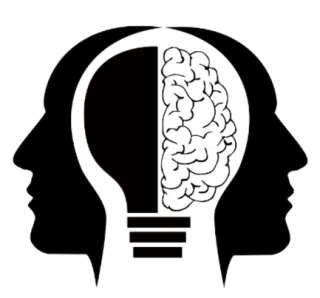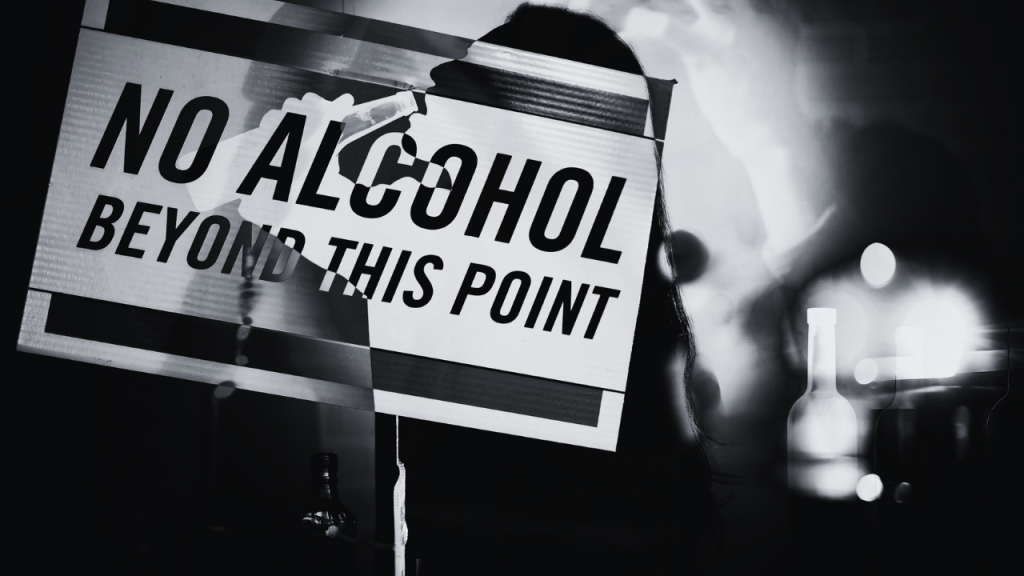When we talk about alcoholism, the conversation tends to orbit vague ideas like “addiction,” “bad choices,” or “genetic predisposition.” But what if none of these are quite right? What if alcoholism, like most so-called addictions, is simply a symptom—a maladaptive attempt to regulate a broken internal state? What if the body, in its desperate scramble to correct stress, inflammation, and energy failure, reaches for anything—alcohol included—that can suppress the system long enough to feel momentarily alive again?
This isn’t speculation. Alcohol abuse, like other compulsive behaviors, is largely driven by stress hormones, serotonin dysfunction, and metabolic breakdown. And once you understand that, it becomes very clear why so many modern people—not just a few genetically “addicted” individuals—are turning to alcohol with increasing frequency and desperation.
At the heart of this stress-addiction connection is serotonin, a neurotransmitter that modern medicine paints as a mood-boosting ally but that in reality often functions as a suppressive, inhibitory, and hibernation-inducing chemical. High serotonin is associated with the slowing of metabolism, dampened cognition, low body temperature, high cortisol, and depressive rumination. In fact, several studies and experiments have now demonstrated that blocking serotonin—either with drugs like cyproheptadine, or even simple dietary interventions—can lift the fog, increase energy, restore metabolic activity, and reduce the compulsive cravings for substances like alcohol.
One of the clearest pieces of evidence comes from the Rat Park experiment, where rats given ample social interaction and space to roam showed little interest in drugs—even when freely available. But isolated rats, deprived of stimulation and forced into stressful, confined environments, eagerly consumed opioids and alcohol. The conclusion is simple and elegant: addiction is a coping mechanism. When an organism is socially, metabolically, and emotionally impoverished, it reaches for whatever chemical feels like relief.
More recent studies extend this idea even further. In crayfish—yes, crustaceans—those with strong social histories became intoxicated much faster than their isolated peers. Socialized crayfish needed only minutes to exhibit signs of drunkenness, while loners took nearly half an hour. Why? Because social isolation raises serotonin levels, which antagonize the GABAergic effects of alcohol, requiring a larger dose to feel the same impact. In this way, alcohol functions like a surrogate for connection, a biochemical attempt to manufacture the neurochemical state that closeness, safety, love and otherwise high energy metabolism would provide.
This interaction between serotonin, GABA, and alcohol is fundamental. Alcohol temporarily increases GABAergic tone—calming the nervous system, lowering cortisol, and producing vasodilation through nitric oxide. Some of you might recognize the name nitric oxide from products sold in vape or smoke shops, often marketed as enhancers—but what most don’t realize is that your own body also produces this gas, especially under stress. It’s a compensatory response, triggered by liver toxicity and when carbon dioxide levels are low. Unlike CO₂, which supports cellular energy and respiration, nitric oxide is a reactive, stress-induced gas that signals dysfunction—not vitality. While nitric oxide is cytotoxic and inhibits mitochondrial respiration, in small doses it plays a role in calming an overexcited, cortisol-drenched system. The euphoric sensation people feel after a drink is not proof of pleasure, but rather a sign of temporary relief from an overactive stress system.
The buzz from alcohol often carries a sense of unease that lingers beneath the surface. Instead of feeling relaxed, there’s a subtle drive to stay busy, to chase distractions, or dwell on thoughts that won’t settle. This underlying tension seems to reflect alcohol’s estrogenic influence, which, in susceptible people, can heighten emotional volatility and bring out more reactive, unsettled behavior.
In other words, it mimics a stress adaptation, forcing the body into a low-functioning, energy-conserving mode. Over time, this contributes to liver damage, fatty liver, gut leakiness, and inflammatory disease—especially when polyunsaturated fats (PUFAs) and free iron are present, which amplify oxidative stress and lipid peroxidation. Alcohol by activating heme oxygenase (HO), an enzyme upregulated when liver cells are under oxidative stress liberates Fe2+ (iron) and PUFAs going on to form lipofuscin.
Lipofuscin is a yellow-brown pigment that accumulates inside cells over time, especially in long-lived, non-dividing cells like neurons, heart muscle, and liver cells. It’s often called the “age pigment” and takes on a browning color that can show up in many organs such as the liver — its buildup is strongly associated with aging and chronic stress. It’s essentially a kind of cellular garbage that the body can’t clear. Once formed, it accumulates inside lysosomes (the cell’s cleanup crew), and over time, it impairs cellular function by clogging up the machinery.
Liver damage is often blamed solely on alcohol, but the real culprits are iron and polyunsaturated fats (PUFA), which create a toxic environment in the liver. Alcohol simply accelerates the damage they initiate, acting as a prompt rather than the root cause.
When alcohol activates heme oxygenase (HO), it sets off a chain of biological effects strikingly similar to those caused by endotoxin (lipopolysaccharide or LPS). This includes an increase in estrogenic and immunosuppressive activity—marked by COX-2 upregulation, heightened lipid peroxidation, nitric oxide overproduction, and a skewing of the immune system. Much like LPS, alcohol disrupts the gut barrier, allowing microbial toxins to seep into the bloodstream—a problem made even worse by dysbiosis and bacterial overgrowth. Yet, long-chain saturated fats such as stearic and palmitic acid offer a potent defense. Decades of research, dating back to the mid-20th century, have shown that these fats not only guard against alcohol-induced liver damage but can even reverse conditions like fibrosis and cirrhosis. Likely by preventing gut-derived endotoxins from reaching the liver. They do this by reinforcing intestinal barrier integrity, and reducing bacterial overgrowth.
During chronic alcohol use and withdrawal, cortisol levels spike, driving anxiety, dysphoria, and neuroinflammation—especially in the amygdala, a key limbic brain structure tied to emotional memory and fear. This overstimulation of the amygdala reinforces a cycle of negative reinforcement: drink to lower the stress, stop drinking and feel worse, drink again to restore calm. In this light, addiction is not about craving pleasure, but about fleeing from pain—a biological effort to escape the cortisol loop.
This is where compounds like mifepristone (RU486) uncover cortisol’s role in alcoholism . Best known as a glucocorticoid receptor antagonist, mifepristone has shown impressive results in both animal and human studies for reducing alcohol cravings and compulsive drinking. By blocking cortisol at the receptor level, it effectively shuts off the stress response and reduces the need to self-medicate. In one study, a one-week course of mifepristone not only reduced cue-triggered cravings but also decreased actual alcohol consumption, even weeks after the drug was discontinued.
Pregnenolone, a steroid precursor and anti-glucocorticoid, has shown similar benefits, reducing alcohol-seeking behavior in rats.
Of course, all of this circles back to one thing: metabolic health. A well-functioning thyroid, steady blood sugar, strong liver function, and optimal steroid hormone levels protect the body and mind from the chaos of stress. They provide internal safety, which reduces the need for external escapes. Alcohol, in this framework, is not a vice but a crutch for a failing system, a chemical attempt to restore balance in the face of exhaustion.
When metabolism is high—as it is in young children—the body heals quickly, recovers from trauma, and experiences vivid dreams while awake. It is the natural state of the healthy brain, unshackled by authoritarian culture and the inhibitory grip of stress chemicals. In contrast, adults with poor mitochondrial function and elevated serotonin tend to feel foggy, joyless, and compulsively driven toward distraction or relief. Alcohol becomes a way to simulate the “buzz” of energy they can no longer generate on their own.
In the end, alcoholism is not a disease—it is a symptom. A symptom of disconnection, of social isolation, of broken energy metabolism, and of a culture that refuses to admit the role of environment, diet, and biology in shaping behavior. People don’t become alcoholics because they’re weak or broken. They become alcoholics because their biology is screaming for help—and alcohol, in a world of synthetic foods, serotonin reuptake inhibitors, and polyunsaturated fats, is one of the few substances left that actually works… at least for a little while.
If this has made you rethink what really drives alcohol use, stress, or even so-called “addiction,” there’s much more to explore. This is Apophenia — a free forum where we dig deeper into these connections—unpacking everything from metabolic health and neurochemistry to behavior, and the hormones most people overlook. There’s also a free document available in the link below that breaks down the fundamentals of energy and human function—how it connects everything from mood to metabolism to aging. If you’re looking for clarity in a world full of confusion, or just tired of surface-level advice, come join us. No gimmicks, just real conversations.
Energy Comprehensive Addiction Combating
The term “Apophenia” is described as the tendency to perceive a connection or meaningful pattern between seemingly unrelated or random things, such as objects or ideas, and similarly deemed by psychologists as the human tendency to see connections and patterns that are not really there.


Start the discussion at forum.apophdolia.com